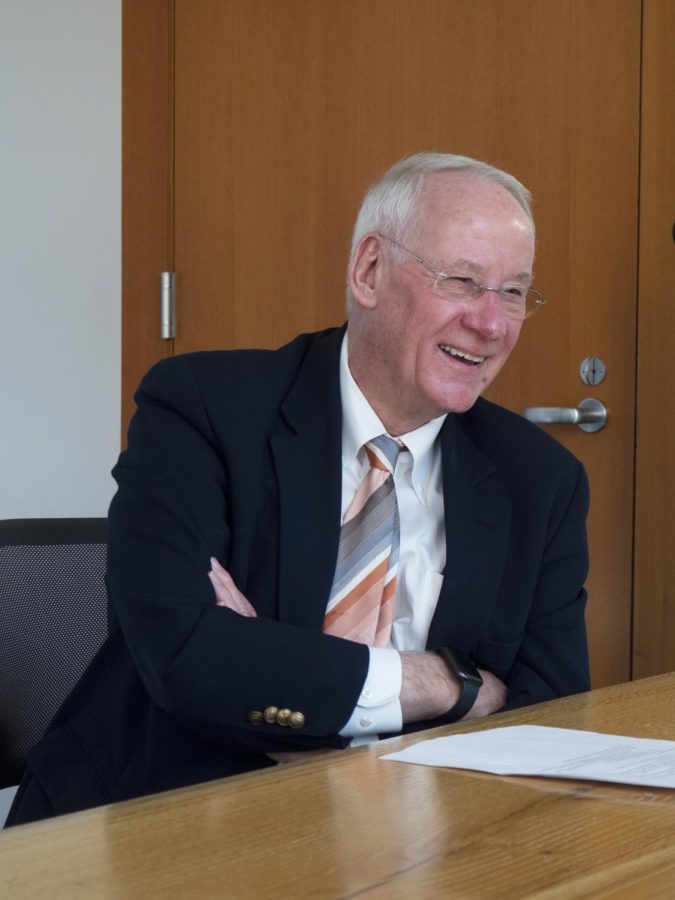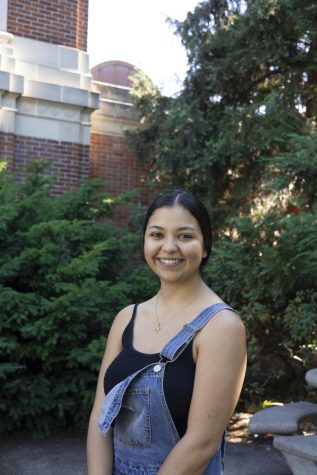A look back at President Emeritus Ed Ray’s impression on OSU
July 22, 2020
As Ed Ray stepped out of his position as Oregon State University’s president, he left behind almost two decades worth of influence on the university, including improvements to the diversity of the student population, as well as OSU’s physical campuses. Listed below are four major projects created during the latter half of Ray’s presidency.
Increasing diversity on campus (2003-19)
When Ray first entered the presidential position at OSU in 2003, historically underrepresented students on campus only took up 13.5% of the total student population, which Ray was able to increase by the end of his term to 26.3%.
These underrepresented groups include first-generation students, low-income, LGBTQIA+, students of color, students with disabilities and other minority groups as listed on OSU’s Diversity and Cultural Engagement website.
The offices of Institutional Diversity and Equal Opportunity and Access were created in 2017 in an effort to increase diversity amongst students, faculty and staff. The mission of these offices is to promote diversity by consulting with departments across the university, coordinating with OSU’s Bias Response Team, and engaging in conversations about racism happening both nationally and globally.
Ray chose Charlene Alexander to be the office’s Chief Diversity Officer who has been in the position since 2016.
OSU-Cascades’ transition to a four-year university (2012-17)
The start of OSU-Cascades’ transformation into a four-year university started shortly after the Tykeson Family Charitable Trust donated $1 million to the campus in 2012.
Four years later, Ray announced the first completed building of many on campus, Tykeson Hall, an academic building used for classrooms, laboratories and faculty and student support offices.
As a finished campus, OSU-Cascades offers more accessibility to students living near Central Oregon and provides the local economy with an additional boost in revenue.
Renaming campus buildings with controversial ties (2017)
Since OSU’s foundation, there have been buildings on campus that are named after influential people in the university’s history. This includes Joseph C. Avery, whom Avery Lodge was named after.
In an official news release, Ray stated that Avery was pro-slavery in both his involvement to a pro-slavery newspaper in the 1850s and worked to advance slavery in Oregon.
“I recognize that Joseph C. Avery made important contributions in the early days to help establish [OSU],” Ray said in the letter addressed to the OSU community. “I also am mindful that over the past decades, other members of the Avery family have contributed to OSU and I thank them for their support of the university. However, it is my decision that going forward, OSU will no longer recognize Joseph C. Avery’s legacy with the name of a university building.”
In November of 2017, Avery Lodge was renamed Champinefu Lodge.
Establishment of the Science Research Center in Newport, Ore. (2018-20)
OSU received approximately $441 million for grant-funded research, $122 million which Ray allocated to build a regional research vessel at the Hatfield Marine Science Center in Newport, Ore.
This research vessel will be used by students and faculty to continue the work that has been done at HMSC since it’s foundation in 1965. According to the center’s website, this includes studying oceanic climate issues including acidification, harmful algal blooms, tsunami prediction and declining fisheries.

























































































































